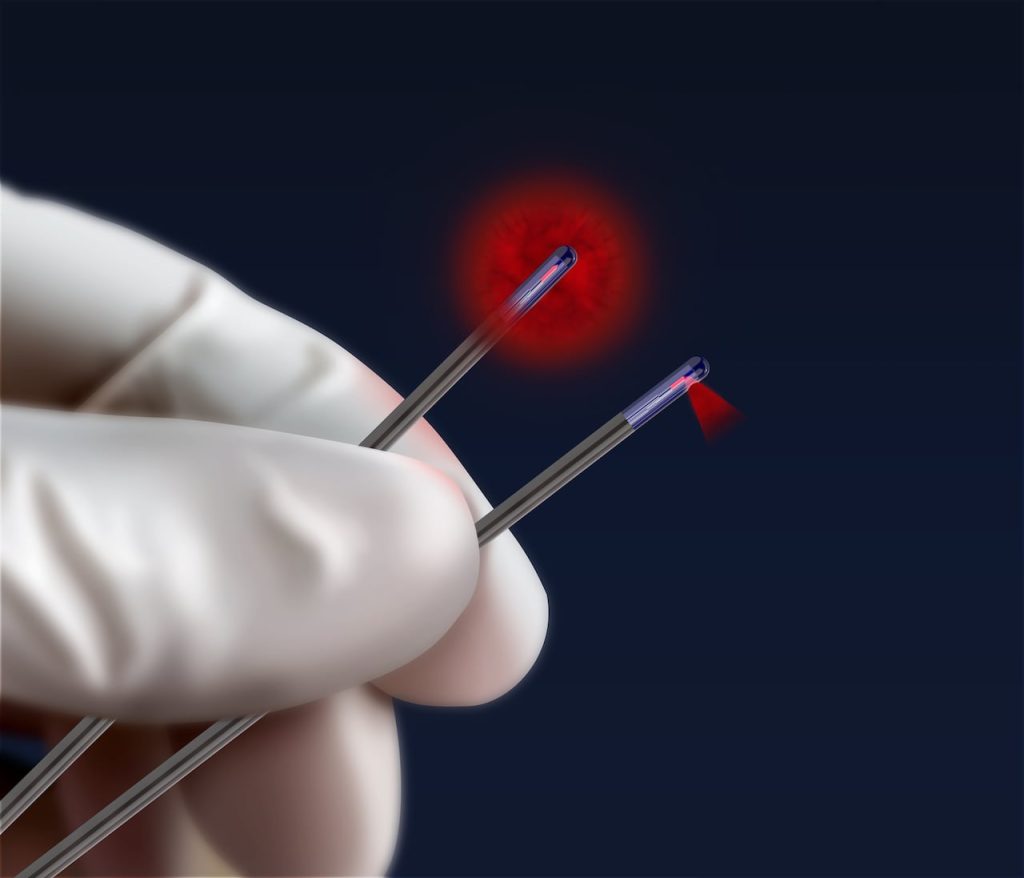Pilonidal cyst laser treatment – Permanent removal of symptoms
Pilonidal cyst is a chronic form of inflammation located in the region of the coccyx, i.e. in the mesogluteal cleft. This disease affects the male gender more often. Factors such as excessive sweating, poor hygiene and thick hair growth in this area can contribute to the formation of a pilonidal cyst. For quite some time, surgery to treat the condition was the main treatment method. However, with the advancement of technology and minimally invasive surgical techniques, pilonidal cyst can now be effectively and painlessly treated using lasers.
A pilonidal cyst develops most often in males aged 15-25 years, however women can also develop it. Obesity, lack of physical activity, sedentary life, intense hair growth increase the chances of developing the condition. The symptoms of a pilonidal cyst are directly related to the time period and phase of the inflammation that has developped.
The most common symptoms include swelling and redness in the affected area, discharge of pus, pain and discomfort in the lower back and fever. The condition is quickly diagnosed by taking a detailed medical history and performing a clinical examination of the affected area. Due to the long and difficult healing process and the risk of recurrence, this condition causes problems and discomfort to patients for a long time if not treated immediately surgically.
The minimally invasive method of the laser for the surgical treatment of the pilonidal cyst offers proven results in curing the condition, minimizing the possible recurrences in the future. Surgery to open and drain the cyst addresses the problem, but is associated with high recurrence rates. Laser pilonidal cyst treatment aims to clear the infected area and treat the cyst to eliminate the possibility of the cyst recurring.
How does laser treatment work?
Surgical treatment for pilonidal cyst with laser is characterised by speed and excellent efficiency. The purpose of the procedure is to clean the infected area and remove the cyst, so that there is no recurrence of the infection. To perform the operation, a tiny flexible laser fiber is used under local anaesthesia. Pulses of laser energy then deliver heat energy to the cyst area to remove the trapped hair causing the cyst cavity to shrink and close. The use of the latest generation SiLaC laser (Sinus Laser Closure) is a revolutionary method for the definitive treatment of the pilonidal cyst.
Pilonidal cyst laser treatment: What are the advantages?
The success of pilonidal cyst laser treatment, which is applied with great success by General Surgeons in Athens, is not only based on minimizing the possibility of recurrence of the condition. At the same time, it offers a clearly improved postoperative course to the patient compared to traditional surgical techniques. Patients return to their daily activities faster and easier. In fact, the return to work is immediate, while it takes 5-7 days for full recovery.
In relation to the classic pilonidal cyst surgery, which requires the patient to stay overnight in the hospital, in the case of laser surgery the patient returns home the same day. In addition, pilonidal laser surgical treatment minimizes the patient’s post-operative pain. The pain is clearly reduced both immediately after the procedure and a week after it. Pain medication after laser treatment lasts up to 5 days.
How can pilonidal cyst recurrence be prevented after laser surgery?
Pilonidal cyst treatment with laser comes with a minimal chance of recurrence. However, there are certain measures that the patient can take to take care of themselves to eliminate the possibility of the condition reoccurring. After the procedure, it is imperative to carefully follow the instructions of the attending physician, such as taking several showers during the day and applying topical ointments to the wound daily. Also, in some cases, laser hair removal of the area is deemed imperative if the patient shows intense hair growth. This prevents the hair from getting under the skin and causing inflammation and the formation of a new pilonidal cyst.


